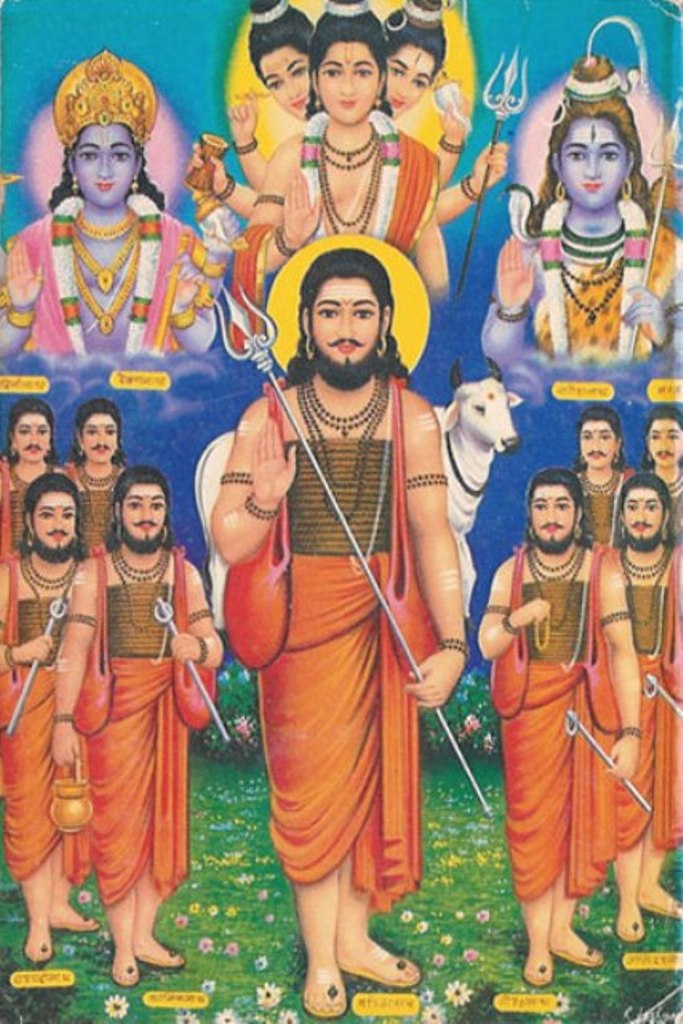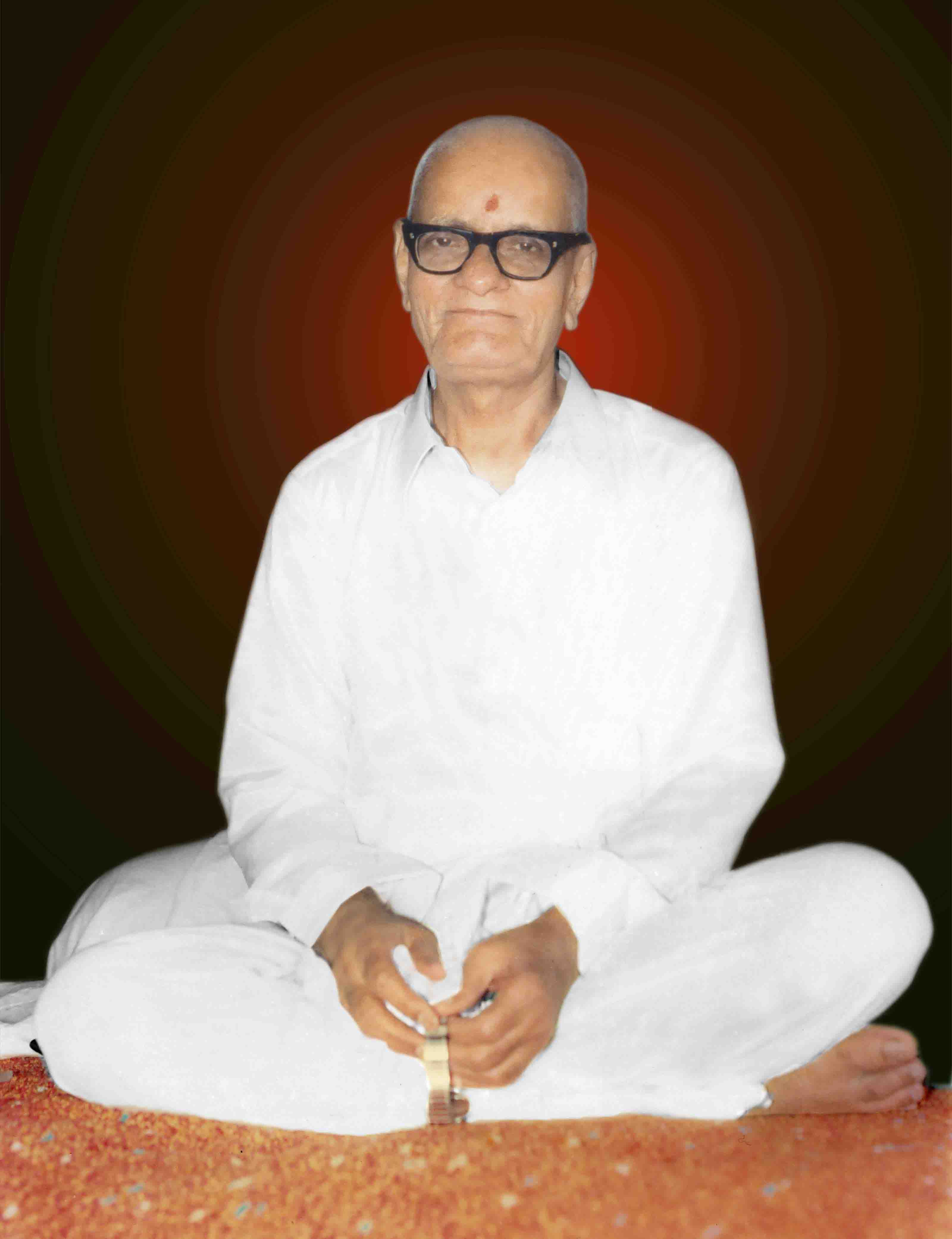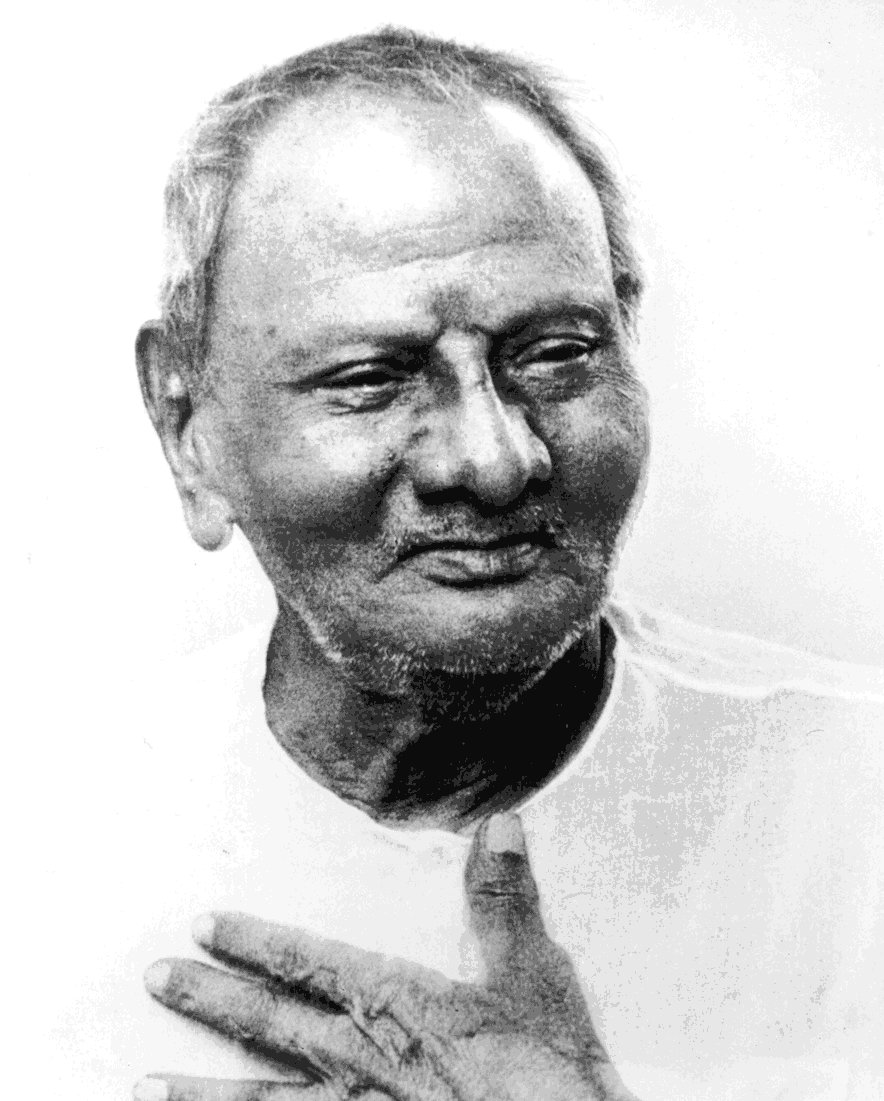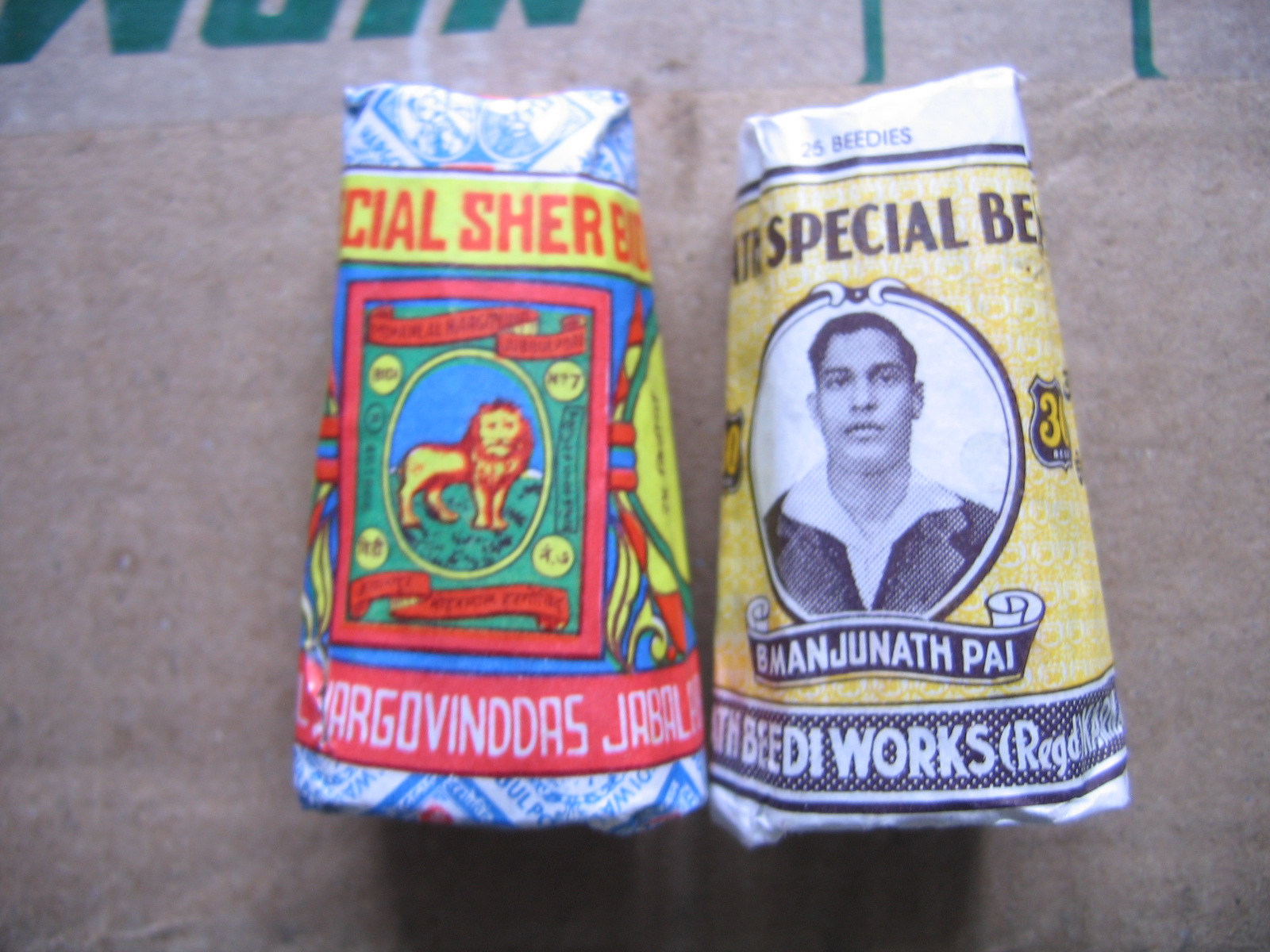|
Nisargadatta Maharaj
Nisargadatta Maharaj (born Maruti Shivrampant Kambli; 17 April 1897 – 8 September 1981) was an Indian guru of nondualism, belonging to the Inchagiri Sampradaya, a lineage of teachers from the Navnath Sampradaya. The publication in 1973 of '' I Am That'', an English translation of his talks in Marathi by Maurice Frydman, brought him worldwide recognition and followers, especially from North America and Europe. Biography Early life Nisargadatta was born on 17 April 1897 to Shivrampant Kambli and Parvati bai, in Bombay. The day was also '' Hanuman Jayanti'', the birthday of Hanuman, hence the boy was named 'Maruti', after him. His parents were followers of the Varkari sampradaya, Vaishnavite bhakti tradition which worships Vithoba. His father, Shivrampant, worked as a domestic servant in Mumbai and later became a petty farmer in Kandalgaon. Maruti Shivrampant Kambli was brought up in Kandalgaon, a small village in the Sindhudurga district of Maharashtra, with ... [...More Info...] [...Related Items...] OR: [Wikipedia] [Google] [Baidu] |
Inchagiri Sampradaya
The Inchagiri Sampradaya, also known as Nimbargi Sampradaya, is a lineage of Hindu Navnath and Lingayat Guru, teachers from Maharashtra and Karnataka, which was started by Bhausaheb Maharaj. It is inspired by Sant Mat teachers as Namdev, Ravidas, Raidas and Kabir Das, Kabir. The Inchagiri Sampradaya has become well known throughout the western world due to the popularity of Nisargadatta Maharaj. History Navnath Dattatreya The mythological origins of the Inchagiri Sampradaya are ascribed to Dattatreya, Adiguru Shri Dattatreya. He initiated the Navnath, Navanaths, the Holy Nine Gurus, and the Navnath, Navanath Sampraday. Revananath – Siddhagiri Math (Kaneri Math) One of those Navnaths was Revanath, the 7th or 8th Navnath. Revanath settled on the Siddhgiri hill for ascetic practice, living on whatever the jungle, gave him. He became famous as Kaadhsiddheshwar, "the one who attained supreme realization in a forest". Revananath is considered to have established the Siddh ... [...More Info...] [...Related Items...] OR: [Wikipedia] [Google] [Baidu] |
Maurice Frydman
Maurice Frydman (''Maurycy Frydman'' or ''Maurycy Frydman-Mor'' in Polish), aka ''Swami Bharatananda'' (20 October 1901 in Warsaw, Russian Empire – 9 March 1976 in Bombay, India), was an engineer and humanitarian who spent the later part of his life in India. He lived at the ashram of Mahatma Gandhi and took an active part in India's fight for independence—notably in helping to draft a new constitution for the State of Aundh that became the Aundh Experiment. He was a Polish Jew who subsequently converted to Hinduism. Biography Frydman came to India in the late 1930s as a Jewish refugee from Warsaw. A successful capitalist, he was managing director of the Mysore State Government Electrical Factory in Bangalore. Eventually he was won over by Hindu philosophy and became a sannyasi. Frydman was instrumental, along with Gandhi and Bhawanrao Shriniwasrao Pant Pratinidhi, the Raja of Aundh, in helping to draft the November Declaration, which handed over rule of the state of Au ... [...More Info...] [...Related Items...] OR: [Wikipedia] [Google] [Baidu] |
Siddharameshwar Maharaj
Sri Siddharameshwar Maharaj (1888–1936) was a guru in the Inchagiri Sampradaya founded by his guru Bhausaheb Maharaj, a branch of the Navnath Sampradaya, the 'Nine Masters' tradition in India. His disciples included Nath teachers Nisargadatta Maharaj, Ranjit Maharaj, Kaadsiddheshwar, and Ganapatrao Maharaj Kannur. Biography Siddharameshwar was born in 1888 in the village Pathri, Solapur, India, making him one of the contemporaries of Sri Ramana Maharshi. Since childhood, he had been credited with a sharp intellect and a natural ability to learn and absorb knowledge; in 1906, in Karnataka, he was initiated into Inchagiri by his guru Shri Bhausaheb Maharaj, who taught mantra meditation as the way to reach Final Reality. In 1920, Siddharameshwar started to set out on "the Bird's Path", the fast way to attain realization, six years after Bhauhaseb Maharaj had died. His fellow-students opposed this course of action; but, eventually, Siddharameshwar succeeded in attaini ... [...More Info...] [...Related Items...] OR: [Wikipedia] [Google] [Baidu] |
Inchegeri Sampradaya
The Inchagiri Sampradaya, also known as Nimbargi Sampradaya, is a lineage of Hindu Navnath and Lingayat Guru, teachers from Maharashtra and Karnataka, which was started by Bhausaheb Maharaj. It is inspired by Sant Mat teachers as Namdev, Ravidas, Raidas and Kabir Das, Kabir. The Inchagiri Sampradaya has become well known throughout the western world due to the popularity of Nisargadatta Maharaj. History Navnath Dattatreya The mythological origins of the Inchagiri Sampradaya are ascribed to Dattatreya, Adiguru Shri Dattatreya. He initiated the Navnath, Navanaths, the Holy Nine Gurus, and the Navnath, Navanath Sampraday. Revananath – Siddhagiri Math (Kaneri Math) One of those Navnaths was Revanath, the 7th or 8th Navnath. Revanath settled on the Siddhgiri hill for ascetic practice, living on whatever the jungle, gave him. He became famous as Kaadhsiddheshwar, "the one who attained supreme realization in a forest". Revananath is considered to have established the Siddh ... [...More Info...] [...Related Items...] OR: [Wikipedia] [Google] [Baidu] |
I Am That
''I Am That'' is a compilation of talks on Shiva Advaita (Nonduality (spirituality), Nondualism) philosophy by Sri Nisargadatta Maharaj, a Hindu spiritual teacher who lived in Mumbai. The English translation of the book from the original Marathi-language, Marathi recordings was done by Maurice Frydman, edited by Sudhakar S. Dixit and first published in 1973 by Chetana Publications. The book was revised and reedited in July 1981. These publications led to the spread of Nisargadatta's teachings to the West, especially North America and Europe. Excerpts of the book were published in ''Yoga Journal'' in September 1981, the month Nisargadatta died at age 84. The book is considered the author's masterpiece and a spiritual classic by authors and teachers like Eckhart Tolle, Wayne Dyer, Deepak Chopra Peter Crone and Adyashanti, who called the book a "standout" and "the clearest expression I've ever found." Dyer calls Nisargadatta his teacher, and cites the quotation, "Love says: 'I am eve ... [...More Info...] [...Related Items...] OR: [Wikipedia] [Google] [Baidu] |
Hinduism
Hinduism () is an Hypernymy and hyponymy, umbrella term for a range of Indian religions, Indian List of religions and spiritual traditions#Indian religions, religious and spiritual traditions (Sampradaya, ''sampradaya''s) that are unified by adherence to the concept of ''dharma'', a Ṛta, cosmic order maintained by its followers through rituals and righteous living, as expounded in the Vedas. The word ''Hindu'' is an exonym, and while Hinduism has been called the oldest religion in the world, it has also been described by the modern term ''Sanātana Dharma'' () emphasizing its eternal nature. ''Vaidika Dharma'' () and ''Arya dharma'' are historical endonyms for Hinduism. Hinduism entails diverse systems of thought, marked by a range of shared Glossary of Hinduism terms, concepts that discuss God in Hinduism, theology, Hindu mythology, mythology, among other topics in Hindu texts, textual sources. Hindu texts have been classified into Śruti () and Smṛti (). The major Hin ... [...More Info...] [...Related Items...] OR: [Wikipedia] [Google] [Baidu] |
Vithoba
Vithoba (IAST: ''Viṭhobā''), also known as Vitthala (IAST: ''Viṭṭhala''), and Panduranga (IAST: ''Pāṇḍuraṅga''), is a Hindu deity predominantly worshipped in the Indian states of Maharashtra and Karnataka. He is a form of the Hindu deity Vishnu in his avatar: Krishna. Vithoba is often depicted as a dark young boy, standing arms akimbo on a brick, sometimes accompanied by his consort Rakhumai. Vithoba is the focus of an essentially monotheistic, non-ritualistic bhakti-driven Varkari faith in Maharashtra and the Haridasa sect established in Dvaita Vedanta in Karnataka. Vithoba Temple, Pandharpur is his main temple. Vithoba legends revolve around his devotee Pundalik who is credited for bringing the deity to Pandharpur, and around Vithoba's role as a saviour to the poet-saints of the Varkari faith. The Varkari poet-saints are known for their unique genre of devotional lyric, the abhang, dedicated to Vithoba and composed in Marathi. Other devotional literature dedi ... [...More Info...] [...Related Items...] OR: [Wikipedia] [Google] [Baidu] |
Sindhudurg District
Sindhudurg district (Marathi pronunciation: in̪d̪ʱud̪uɾɡə is an administrative district of the Konkan division in India, which was carved out of the erstwhile Ratnagiri district. The district headquarters are located at Oros. The district occupies an area of approximately 5,207 km and has a population of 849,651, of which 12.59% were urban (as of 2011). As of 2011, it is the least populous district of Maharashtra (out of 36). History Sindhudurg district was established on 1 May 1981. The word 'Konkan' is of Indian origin and considerable antiquity, though the origin of the name has never been definitively explained. The seven kingdoms of the Konkan of mythology are mentioned in the History of Kashmir and are said to have included nearly the whole west coast of India. The Pandavas are said to have passed through this region in the 13th year of their exile and to have settled in this area for some time. The Raja of this region, Veerat Ray, accompanied them in t ... [...More Info...] [...Related Items...] OR: [Wikipedia] [Google] [Baidu] |
Maharashtra
Maharashtra () is a state in the western peninsular region of India occupying a substantial portion of the Deccan Plateau. It is bordered by the Arabian Sea to the west, the Indian states of Karnataka and Goa to the south, Telangana to the southeast and Chhattisgarh to the east, Gujarat and Madhya Pradesh to the north, and the Indian union territory of Dadra and Nagar Haveli and Daman and Diu to the northwest. Maharashtra is the second-most populous state in India, the third most populous country subdivision in South Asia and the fourth-most populous in the world. The state is divided into 6 divisions and 36 districts. Mumbai is the capital of Maharashtra due to its historical significance as a major trading port and its status as India's financial hub, housing key institutions and a diverse economy. Additionally, Mumbai's well-developed infrastructure and cultural diversity make it a suitable administrative center for the state, and the most populous urban are ... [...More Info...] [...Related Items...] OR: [Wikipedia] [Google] [Baidu] |
Beedi
A beedi (also spelled bidi or biri) is a thin cigarette or cigar, mini-cigar filled with tobacco flake and commonly wrapped in a tendu (''Diospyros melanoxylon'') or ''Piliostigma racemosum'' leaf tied with a string or adhesive at one end. It originates from the Indian subcontinent. The name is derived from the Marwari language, Marwari word ''beeda''—a mixture of betel nuts, herbs, and spices wrapped in a leaf. It is a traditional method of tobacco use throughout South Asia and parts of the Middle East, where beedies are popular and inexpensive. In India, beedi consumption outpaces conventional cigarettes, accounting for 48% of all Indian tobacco consumption in 2008. History Beedies were invented after Indian tobacco cultivation began in the late 17th century. Tobacco workers were the first to create them by taking leftover tobacco and rolling it in leaves. The commercial Indian beedi industry saw rapid growth during the 1930s probably driven by an expansion of tobacco c ... [...More Info...] [...Related Items...] OR: [Wikipedia] [Google] [Baidu] |
Varkari
Warkari ( ; Marathi: ; Pronunciation: ; Meaning: 'The one who performs the ''Wari''') is a sampradaya (religious movement) within the bhakti spiritual tradition of Hinduism, geographically associated with the Indian state of Maharashtra. Warkaris worship Vitthal (also known as Vithoba), the presiding deity of Pandharpur, regarded as a form of Vishnu. Saints and gurus of the bhakti movement associated with the Warkaris include Dnyaneshwar, Namdev, Chokhamela, Eknath, and Tukaram all of whom are accorded the title of Sant. Recent research has suggested that the Varkaris were historically the followers of Krishna. Vittala is also another name for Krishna. Krishna is referenced as Vittala in most Bhakthi songs of Purandara Dasa and other Bhakti Saints. Influence The Warkari tradition has been part of Hindu culture in Maharashtra since the thirteenth-century CE, when it formed as a ''panth'' (community of people with shared spiritual beliefs and practices) during the Bhakti ... [...More Info...] [...Related Items...] OR: [Wikipedia] [Google] [Baidu] |





